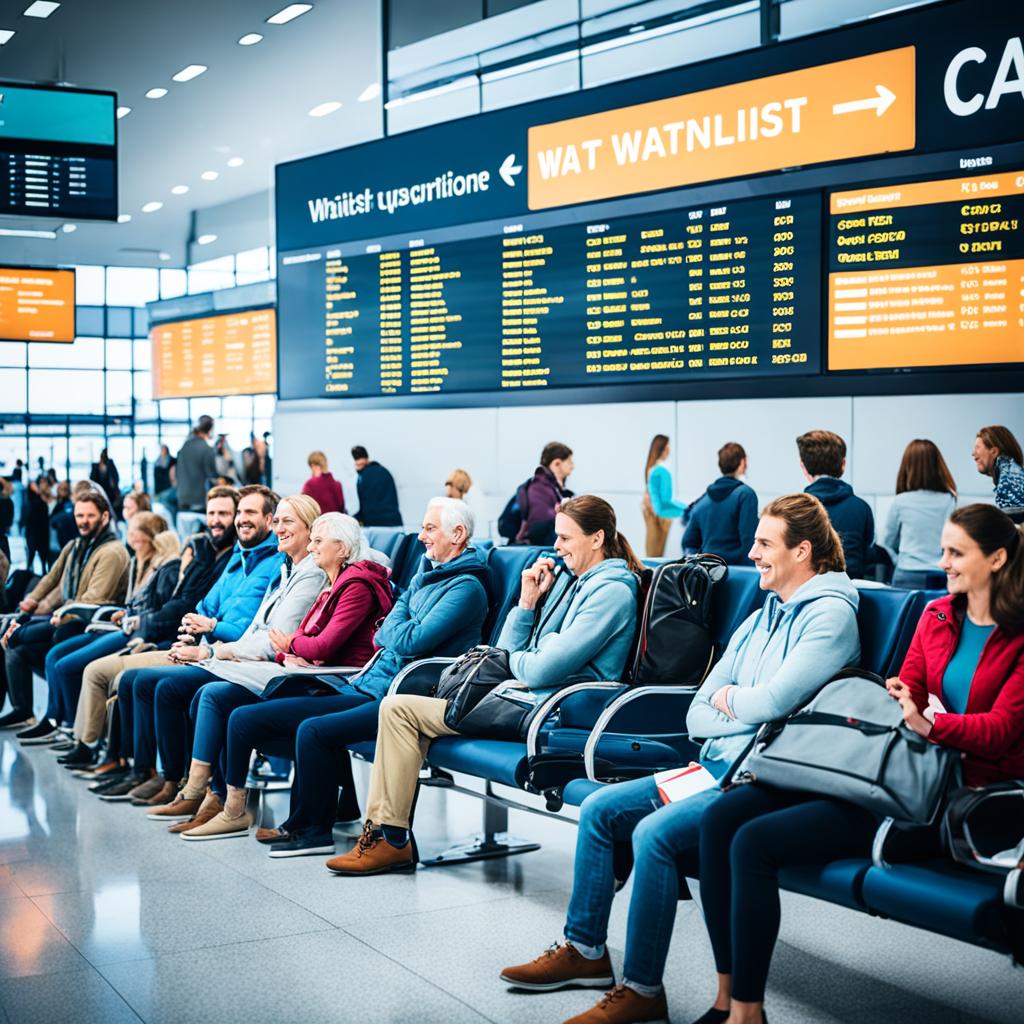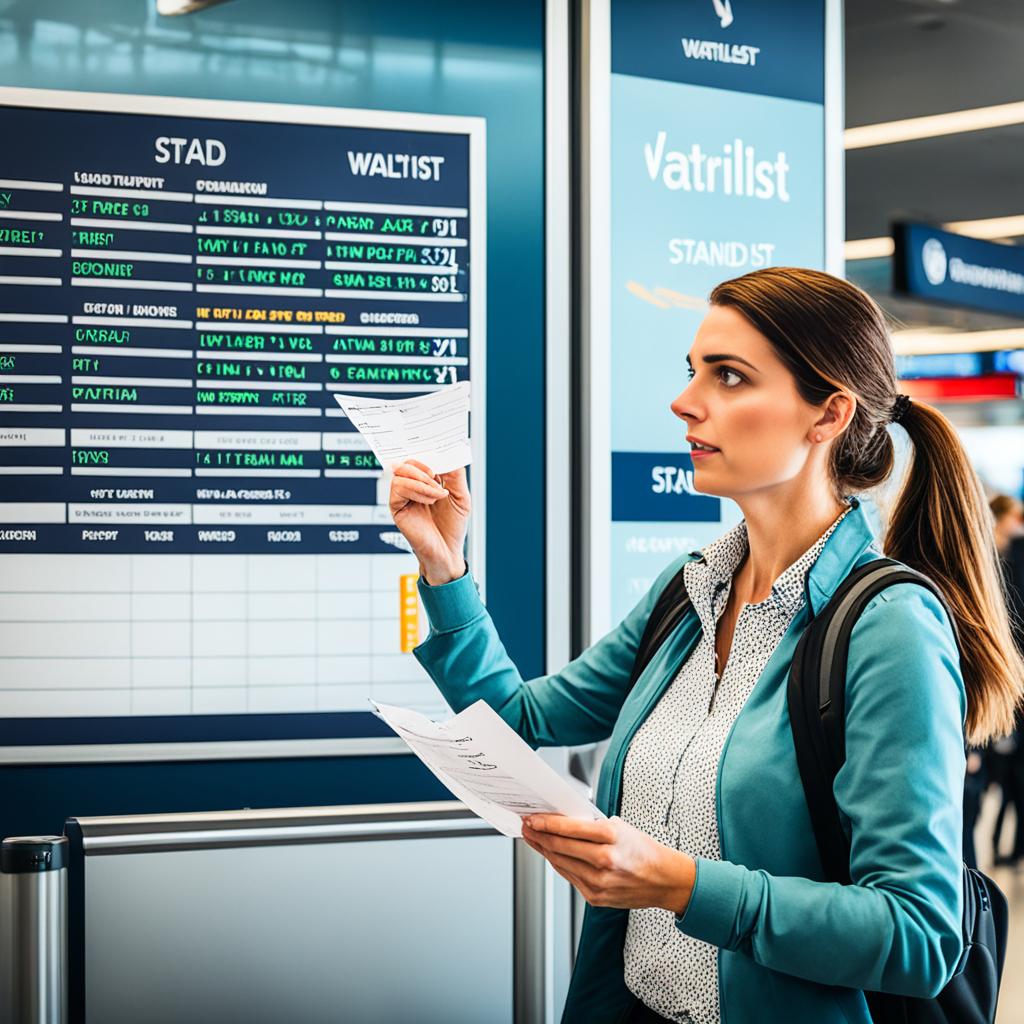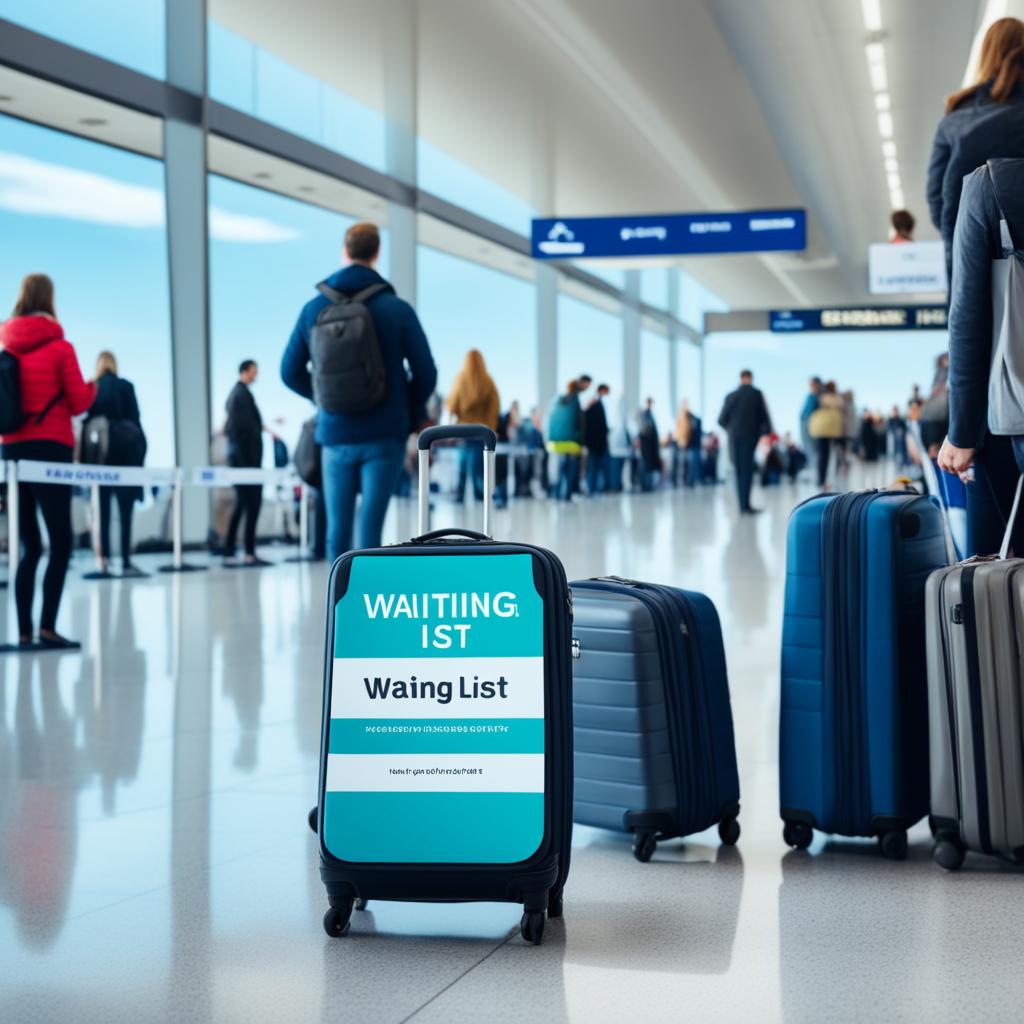Have you ever found yourself desperately trying to book a flight, only to be met with the frustrating message that it’s fully booked? But what if we told you that there’s a way to secure a seat even when it seems impossible?
In the fast-paced world of air travel, airlines have a secret weapon to accommodate passengers when flights and booking classes are fully booked – the waiting list. By registering on a flight waiting list, you can increase your chances of getting a seat on your desired flight, even if it appears to be fully booked initially.
But how exactly does this waiting list system work? And what do you need to do to get yourself on it? In this article, we’ll explore the ins and outs of registering on a waiting list for a flight, providing you with the information you need to secure your seat. So, are you ready to dive in?
Before we delve into the intricacies of the waitlisting process, let’s first understand the basics. The airline industry utilizes a waitlisting system when flights and booking classes reach full capacity. It allows passengers to be confirmed if seats become available. Whether you’re a seasoned traveler or new to the game, understanding how to navigate this system can greatly increase your chances of securing a seat on a sought-after flight.
How the Waitlist System Works

When the availability for a specific class of service on a flight displays “0” or “L,” you have the option to be waitlisted for that flight. The waitlist system allows you to secure a seat if it becomes available. Let’s explore how it works:
- Short Sell (SS) Entry: To waitlist through a short sell entry, provide the flight number, desired class code, number of seats, and a non-group priority waitlist indicator. The system processes the waitlist segment based on the airline’s access with the booking system.
- Long Sell Entry: For a long sell entry, add the PE action code followed by the number of seats. The system responds with the standard waitlist request.
By utilizing the waitlist system, you can proactively secure a seat on a fully booked flight. Now that you understand the process, let’s move on to the next section to learn about the differences between waitlist and stand-by.
Waitlist vs Stand-By

In the airline industry, understanding the difference between the waitlist and stand-by can help you make informed decisions when boarding a flight. Let’s explore the distinctions between these two concepts.
Waitlist:
The waitlist allows passengers to reserve a specific class of service in advance. When a flight is fully booked, passengers can waitlist their desired class of service, indicating their preference for availability. If seats become available due to cancellations or changes, the airline will confirm the waitlisted passengers in the order they were added to the list.
When waitlisting, passengers pay the usual price for the flight if their reservation is confirmed. This ensures that they secure a seat on their desired flight, even if it was initially unavailable. Waitlisting can be a great option when you have a specific class or flight in mind.
Stand-By:
On the other hand, stand-by allows passengers to board a different flight on the same day, typically when their original flight is fully booked. Stand-by eligibility depends on the airline’s policies, fare rules, and available space after all confirmed passengers have been seated.
Passengers can request to be placed on stand-by at the airport or through online check-in. Airlines often prioritize stand-by passengers based on factors such as ticket type, frequent flyer status, or the order in which passengers requested stand-by.
It’s important to note that stand-by requests may incur additional costs, depending on the airline’s policies and fare rules. This option is particularly useful when flexibility in travel plans is essential or when alternative flights are available.
Comparison:
| Waitlist | Stand-By |
|---|---|
| Reserve a specific class of service in advance | Board a different flight on the same day |
| Confirmation based on seat availability | Confirmation based on available space after all confirmed passengers are seated |
| Pay the usual price if confirmed | May incur additional costs |
Understanding the differences between the waitlist and stand-by can help you navigate the flight booking process more effectively. Whether you prefer reserving a specific class in advance or are open to alternative flights, knowing your options empowers you to make the best decision for your travel needs.
Waitlist Availability and Fare Rules

Waitlist availability and fare rules can vary depending on the airline you are flying with. While some deeply discounted fares may not allow waitlists, intermediate and higher fares generally permit waitlisting. It is important to note that the airline’s fare rules ultimately determine whether waitlisting is allowed for your specific ticket. To find out if waitlisting is an option for you, it is recommended to check the fare rules associated with your ticket. This information can usually be found on the airline’s website or by contacting their customer service.
By understanding the waitlist availability and fare rules, you can make an informed decision about whether to waitlist for a flight. If you have a discounted fare and waitlisting is not permitted, you may want to explore other options such as checking for availability on different flights or considering alternative travel dates. However, if waitlisting is available for your fare type, it can be a great way to secure a seat on a flight that is currently fully booked.
Remember, airlines have different policies and rules when it comes to waitlisting, so it’s essential to familiarize yourself with the specific guidelines of the airline you are flying with. Checking the waitlist availability and fare rules can help you plan your travel arrangements more effectively and increase your chances of securing a seat on your desired flight.
Benefits of Registering on a Waiting List
Registering on a waiting list for a flight offers several benefits. By securing a spot on the waitlist, you increase your chances of getting a seat on your desired flight, even if it is initially fully booked. This is particularly advantageous for popular routes or during peak travel periods when flights tend to be in high demand.
One of the key benefits is that being on a waitlist provides you with a potential opportunity to secure a seat if other passengers cancel their bookings. As seats become available due to cancellations, the airline will prioritize those on the waitlist, giving you an increased chance of getting a seat on the flight.
Waitlisting also allows you to have a backup plan in case your initial flight is unavailable. If the flight you originally wanted to book is fully booked, being on the waitlist gives you the possibility of getting on that flight if a seat becomes available.
For example, if you’re planning a trip to a popular vacation destination and all the flights are showing no availability, waitlisting can be a strategic move. As other passengers change their plans or cancel their bookings, you have a higher chance of securing a seat on the flight you desire.
Waitlisting can be a great tool for travelers who have limited flexibility in their travel dates or need to travel on specific flights. By registering on a waiting list, you give yourself the best chance of securing your desired flight, even if it was initially unavailable.
| Benefits of Registering on a Waiting List |
|---|
| Increased chances of getting a seat on a fully booked flight |
| Potential opportunity to secure a seat if other passengers cancel their bookings |
| Backup plan in case your initial flight is unavailable |
| Greater flexibility for travelers with specific flight requirements |
Overall, registering on a waiting list offers a range of benefits, including the increased chances of securing your desired flight, even when it appears to be fully booked. It provides you with a potential opportunity to get on a flight that may have been initially unavailable, ensuring you have a backup plan and greater flexibility in your travel arrangements.
How to Waitlist a Flight (Step-by-Step Guide)
Waitlisting a flight is a straightforward process that ensures you have a chance to secure a seat on a fully booked flight. Follow this step-by-step guide to waitlist your desired flight:
- For a short sell entry, gather the flight number and the desired class code.
- Enter the short sell transaction code, followed by the number of seats you want to waitlist, the class code, and the line number.
- You can also add a non-group priority waitlist indicator for further preference.
If you prefer a long sell entry, here’s what you need to do:
- Add the PE action code followed by the number of seats desired.
The system will process your waitlist request based on the entry you provide. Keep in mind that the availability of waitlisting and specific procedures may vary among airlines, so it’s always advisable to consult the airline’s website or contact their customer service for further assistance.
Now, let’s visualize the step-by-step guide for waitlisting a flight:
| Step | Short Sell Entry | Long Sell Entry |
|---|---|---|
| 1 | Flight number Desired class code |
N/A |
| 2 | Short sell transaction code Number of seats Class code Line number |
PE action code Number of seats |
| 3 | Non-group priority waitlist indicator (optional) | N/A |
Final Thoughts on Waiting List Registration
When it comes to securing a seat on a fully booked flight, registering on a waiting list can be a savvy strategy. Airlines maintain waitlists to accommodate passengers if seats become available due to cancellations or changes. This means that even if a desired flight initially shows no availability, waitlisting offers a potential opportunity to obtain a seat.
Before opting for waitlisting, it is important for passengers to check the airline’s policies, fare rules, and availability. Each airline has its own specific guidelines regarding waitlisting. Additionally, fare rules can impact waitlist availability, so it’s crucial to understand the terms and conditions associated with your ticket. You can find this information on the airline’s website or by reaching out to their customer service.
To ensure you have the best chance of securing a seat through a waitlist, it is recommended to be proactive. Contact the airline directly or use online resources for additional information and assistance. Stay updated on flight availability and be prepared to act quickly if a seat becomes available. By being well-informed and proactive, you can maximize your chances of securing a seat on your desired flight.


